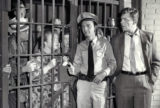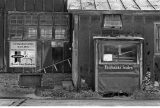The Forgotten History of Brazil’s Concentration Camps
In the Early 20th Century, Authorities Hid Thousands of Impoverished Rural People Trying to Escape Drought
This is an excerpt from Brazilian social critic and novelist Rachel de Queiroz’s first book Os Quinze. Published in 1930 and later translated in English as The Fifteen, it refers to the year 1915 when thousands of people fleeing a drought in the interior of the state of Ceará, in northeastern Brazil, were placed in a concentration camp on the outskirts of the state capital, Fortaleza.
Though little discussed today, in 1915 and again in 1932, eight concentration camps were built in the countryside of Ceará. Today, the rescue of …









